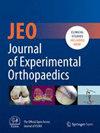Evaluating the accuracy of ultrasonography in the diagnosis of subtle Lisfranc injuries
Abstract
Purpose
Weight-bearing (WB) computed tomography or plain radiography provides the most accurate diagnosis of subtle Lisfranc injuries. However, WB is often challenging for patients due to pain, and these modalities can be inconvenient. Recently, the utility of ultrasonography (US), which enables easy and convenient assessment and bilateral comparison, has gained attention. This study aimed to assess whether US can accurately diagnose these injuries.
Methods
Twenty-five patients with subtle Lisfranc injuries, defined as a > 2 mm distance between the first cuneiform (C1) and second metatarsal (M2) on WB anteroposterior plain foot radiographs, were included in this cross-sectional study. Bilateral foot radiographs were used for intra-individual comparison, and the contralateral side was confirmed to be uninjured. US without stress or WB was performed after radiography, and the C1–M2 dorsal and articular distances were measured to assess whether this modality could accurately diagnose subtle Lisfranc injuries. Patients with uninjured contralateral feet were evaluated as healthy subjects. All patients had ligament injury and instability confirmed intraoperatively.
Results
US measurements demonstrated strong reliability: the intraclass correlation coefficients for the C1–M2 dorsal distance were 0.91 (intra-observer) and 0.92 (inter-observer), and for the articular distance, 0.95 and 0.94, respectively. The C1–M2 dorsal and articular distances were significantly greater on the injured side. The cutoff values for the C1–M2 dorsal and articular distances in diagnosing subtle Lisfranc injury were 9.3 mm and 2.1 mm, respectively. The sensitivity and specificity of the cutoff value for the C1–M2 dorsal distance were 0.88 and 0.72, respectively, whereas those of the cutoff value for the C1–M2 articular distance were 0.76 and 0.96, respectively.
Conclusion
Although US examination requires experience, it demonstrated high diagnostic accuracy in detecting subtle Lisfranc injuries without the need for stress or WB imaging and showed high consistency in both intra- and inter-observer measurements of the C1–M2 distance.
Levels of Evidence
Level III.





 求助内容:
求助内容: 应助结果提醒方式:
应助结果提醒方式:


